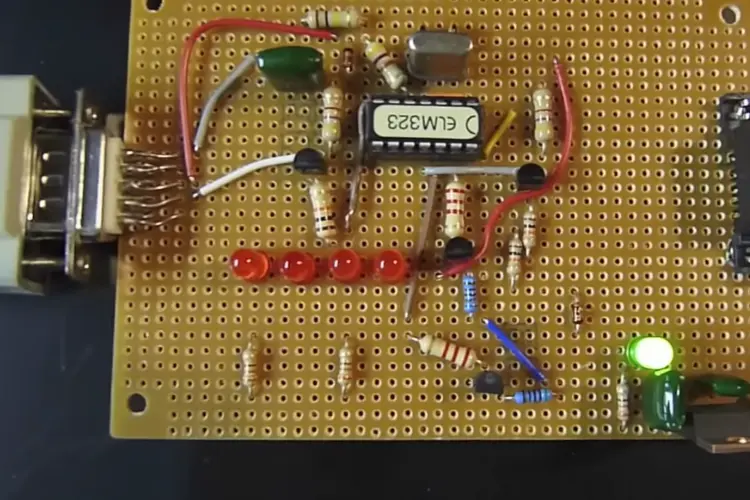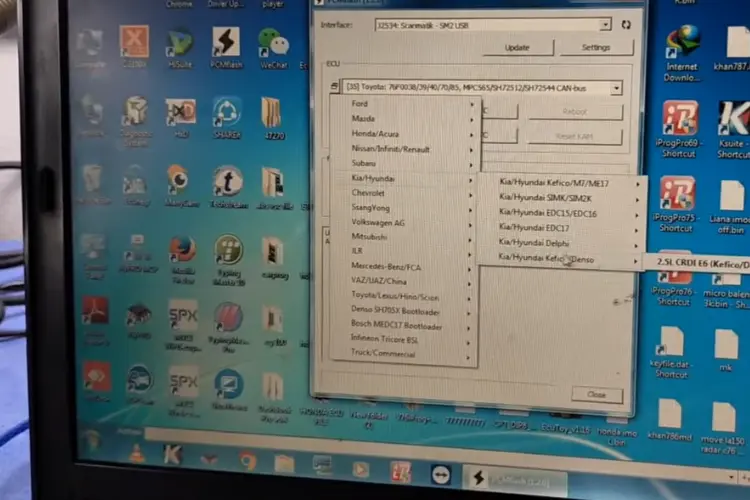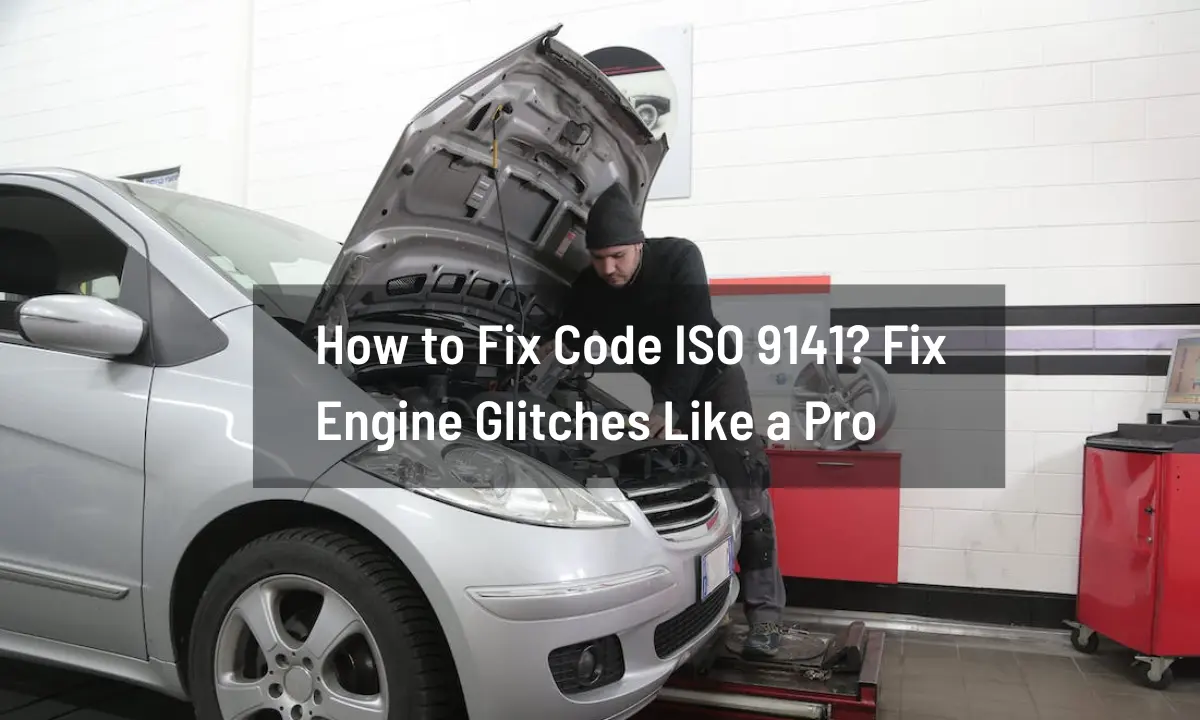How to Fix Code ISO 9141? Fix Engine Glitches Like a Pro
Is ISO 9141 Car Codes Driving You Crazy? Solving the Cryptic Messages That Keep Your Car in Limbo – Get Back Your Sanity on the Road with This Ultimate Decoding Guide!
The dashboard is flashing, an ominous chime, and the engine code has appeared. It’s dreaded news. It’s enough to send shivers down any driver’s spine.
Among the cryptic alphabet soup of OBD-II codes, ISO 9141 stands out as a particularly perplexing one.
Fear not, drivers! I am excited to share a guide that will provide you with the knowledge and tools to successfully diagnose and fix any issues with your vehicle’s code ISO 9141. Let’s hit the road with confidence!
Understanding the Beast: What is ISO 9141?
Fantastic; before we find a solution, let’s take a moment to understand the issue. I’m interested in sharing that “ISO 9141” refers to a communication protocol utilized in vehicle OBD-II systems before the 2000s.
This method operated slower than the current CAN bus system and used a more straightforward K-Line communication system.
Let’s put our heads together and come up with a positive solution!
The Many Faces of ISO 9141:
While a single code, ISO 9141, can manifest in various ways depending on the car manufacturer and model. Here are some common interpretations:
- No communication with the Engine Control Unit (ECU): This is the most frequent interpretation, indicating a breakdown in communication between the diagnostic tool and the car’s brain.
- Malfunction in K-Line: This points to a faulty connection or hardware issue within the K-Line communication system.
- General Communication Error: A broader term, often signaling other underlying communication issues.

Diagnosing the Culprit: Unmasking the Cause
Before diving into repairs, a proper diagnosis is vital. Here’s a step-by-step approach:
- Gather Information: Knowing your car’s make, model, and year can make all the difference in identifying potential issues and performing diagnostic procedures. Please provide the necessary information to ensure your vehicle is handled correctly.
- Double-check Connections: Firmly connect the diagnostic tool to the OBD-II port and switch on the ignition.
- Try Different Tools: If one tool fails to communicate, try another compatible scanner to prevent tool malfunction.
- Consult Service Manuals: Manufacturer-specific manuals often provide detailed diagnostic procedures and troubleshooting tips for ISO 9141 issues.
Related: How to Fix Overdrive Light Flashing
Fixing the Glitch: Tools and Techniques
With the culprit identified, it’s time to roll up your sleeves and get to work. Here are some potential solutions based on the diagnosis:
- Loose Connections: Check for frayed wires, damaged connectors, or corrosion around the OBD-II port and K-Line connections. Clean and repair if necessary.
- Faulty Scanner: If multiple tools display the same issue, the scanner may be the problem. Consider having it checked or replaced.
- ECU Communication Issues: More complex repairs might involve checking fuses, relays, and ECU wiring harnesses for damage or shorts. Consulting a qualified mechanic is recommended here.

Additional Tips for the Road Warriors
Ward off future woes and communication breakdowns with routine TLC! Give your OBD-II port and K-Line connections a quick checkup and clean-up now and then.
Keep your diagnostic tools sharp with fresh software updates, especially for older vehicles. And remember, when the fix requires extra expertise, don’t hesitate to call in the pros!
Experienced mechanics and dealerships can quickly tackle those head-scratching issues and get your car purring again.
Remember: Fixing code ISO 9141 can be challenging, but you can conquer this automotive enigma with the proper knowledge and approach. Approach it with patience, systematic troubleshooting, and a dash of DIY spirit, and you’ll be back on the road in no time!
Related: How To Fix Active Grill Shutter
Beyond the Basics: Advanced Troubleshooting
For the genuinely adventurous DIYers, here’s a glimpse into more advanced troubleshooting techniques:
- OBD-II Scanners with Advanced Features: Some tools offer oscilloscope functions to analyze signal patterns on the K-Line, aiding in diagnosing communication breakdowns.
- K-Line Interface Kits: For the tech-savvy, these kits allow direct access to the K-Line for advanced diagnostics and data manipulation (not recommended for beginners).
Also, venturing into advanced techniques requires technical expertise and caution. Proceed with a healthy dose of respect for the delicate electronics involved.

In Conclusion:
This code may seem formidable, but you can overcome it with the proper knowledge and tools.
By understanding its nature, diagnosing the cause, and applying the appropriate solutions, you can get your car back on track and become a true master of your automotive domain. So, buckle up, embrace the challenge, and conquer the code!
Note: This guide provides general information and troubleshooting tips. Always consult your car’s manufacturer-specific manuals and seek professional help for complex repairs or persistent issues.
Check related videos on YouTube:
Frequently Asked Questions (FAQs)
It’s an old-school communication error in cars before the 2000s. Your vehicle and diagnostic tool speak different languages.
Check the OBD-II port and K-Line connections for dirt or damage. Update your diagnostic tool’s software. If that doesn’t work, a qualified mechanic can dig deeper.
Simple fixes like cleaning or software updates are cheap. But if the problem’s bigger, repairs can cost more. Remember, early diagnosis saves money!
It depends. If your car seems okay, a short trip might be OK. But if it’s acting weird, play it safe and get it checked ASAP.
You can trust experienced mechanics to tackle any intricate diagnoses and repairs. Don’t worry if you’re not confident doing it yourself – they’ve got you covered!

